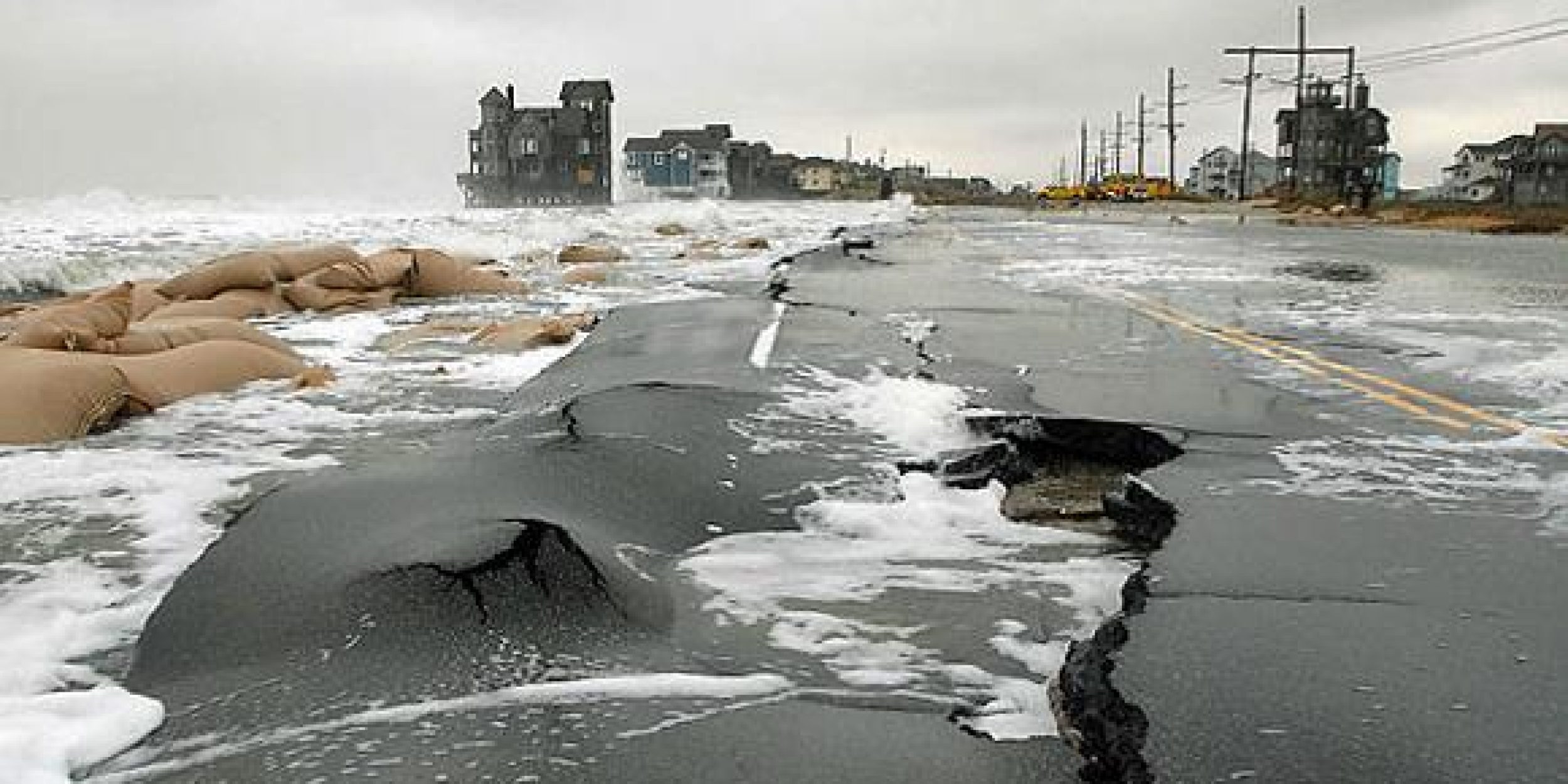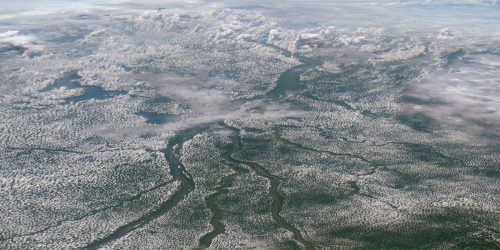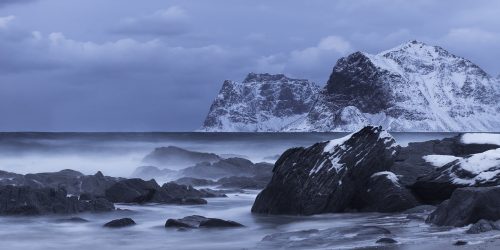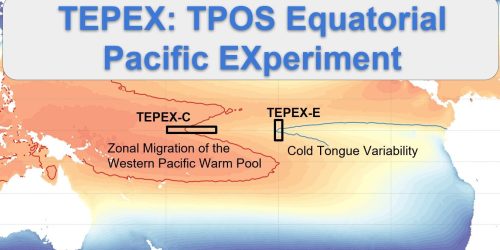Sea level surged unexpectedly along the North Atlantic coast for part of 2009 and 2010, inundating coastal communities from New York to Newfoundland and momentarily confounding residents who, although accustomed to moderate periodic flooding, were unprepared for such an extreme and lengthy event of coastal inundation. Following some investigative science partly funded by NOAA’s Climate Variability and Predictability (CVP) program, the culprit was determined to be a change in the Atlantic Meridional Overturning Circulation (AMOC), which manifests as both a slowdown in the east-to-west Atlantic Ocean circulation (including the Gulf Stream) as well as suppressed winds blowing from west to east, causing water to pile up along the North American east coast. Events such as these could become more common in the future. Therefore, an improved understanding of influences and consequences of Atlantic ocean circulation changes is essential for anticipating and understanding related impacts to weather and ecosystems.
AMOC is a critical component of the global circulation of the ocean, which redistributes heat, salt, and nutrients around the globe, consequently influencing our weather, sea level, and the ecological communities we depend on,such as fisheries. Part of the ‘pump’ that drives AMOC is deep water formation occurring near the Arctic and Antarctic regions of the Atlantic Ocean. This pump is sensitive to regional and global changes in the climate. As such, a long-term goal of the US AMOC Science Team – a multi-institutional team of researchers working to understand this phenomenon better – is to improve the understanding of linkages between South Atlantic Ocean and Southern Ocean, the North Atlantic and Arctic, and the Atlantic Ocean with the climate system. By providing a more detailed characterization of AMOC flow pathways and their impacts on variability, the climate research community can advance toward the overall goal of improving seasonal, inter-annual, decadal, and multi-decadal climate prediction. In addition, a better understanding of AMOC will enable NOAA to improve information for decision makers concerned about coastal inundation, weather and climate extremes, and marine food stock management.
To this end, the CVP program recently solicited projects that refine the current scientific understanding of the AMOC state, variability, and change. Specifically, projects were sought that use newly deployed and existing observations in combination with modeling experiments to refine our understanding of the present and historical circulation (and related transports of heat and freshwater) in the North and/or South Atlantic. NOAA’s Climate Variability and Predictability (CVP) program competitively funded 12 new three-year projects totaling $4.0 million in grants and $1.4 million in other awards to support 30 researchers, postdocs, and students at 16 institutions. These projects represent collaborations between universities, NOAA labs, Department of Energy labs, and other non-governmental research groups. All of the funded Principal Investigators (PIs) will become members of the U.S. AMOC Science Team.
The 12 new projects to be funded in this CVP competition in 2016 are:
- “High-resolution tracer study of AMOC pathways and timescales.” Igor Kamenkovich (University of Miami); Zulema Garraffo (I.M. Systems Group, Inc.); Avichal Mehra (NOAA/NCEP)
- “The Western Transition Zone as a Gatekeeper for the North Atlantic MOC Throughput.” Martha Buckley (George Mason University); Susan Lozier (Duke University)
- Understanding the freshwater budget of the Atlantic Ocean: Controls, Responses, and the Role of the AMOC. Wei Cheng (University of Washington); John Chiang (UC Berkeley); Gokhan Danabasoglu (National Center for Atmospheric Research); Wilbert Weijer (Los Alamos National Laboratory); Dongxiao Zhang (University of Washington).
- “An Investigation of Abyssal to Mid-depth Variations in AMOC Properties and Transports through Observations and Assimilating Models.” Alison Macdonald (Woods Hole Oceanographic Institution); Xujing Davis (Woods Hole Oceanographic Institution); Molly Baringer (NOAA/AOML)
- “Understanding drivers and impacts of CGCM biases in representing the decadal variability of Labrador Sea convection.” Annalisa Bracco (Georgia Tech); Takamitsu Ito (Georgia Tech)
- “Transient tracer fingerprints of Atlantic Meridional Overturning Circulation in Observations and Models.” Anand Gnanadesikan (Johns Hopkins); Thomas Haine (Johns Hopkins); Darryn Waugh (Johns Hopkins)
- “The Southward Returning Pathways of the AMOC and Their Impacts on Global Sea Surface Temperature.” Chunzai Wang (NOAA/AOML); Sang-Ki Lee (NOAA/AOML); Marlos Goes (NOAA/AOML)
- “Inter-hemispheric variability of the South and North Atlantic MOCs and its decadal modulations of global monsoon circulations and extreme weather events in the U.S.” Hosmay Lopez (U. Miami CIMAS & NOAA/AOML); Shenfu Dong (U. Miami CIMAS & NOAA/AOML); Sang-Ki Lee (U. Miami CIMAS & NOAA/AOML); Gustavo Goni (NOAA/AOML)
- “Fingerprints of AMOC Variations Derived From Machine Learning Methods.” Timothy DelSole (George Mason University); Barry Klinger (George Mason University); Arindam Banerjee (University of Minnesota)
- “Interannual to Decadal Variability of the South Atlantic MOC.” Shenfu Dong (U. Miami CIMAS & NOAA/AOML); Sang-Ki Lee (U. Miami CIMAS & NOAA/AOML)
- “Exploring linkages between AMOC and ITCZ variability.” John Marshall (Massachusetts Institute of Technology)
- “South Atlantic-North Atlantic Meridional Overturning Circulation (MOC) Linkages: Analysis of the Upper and Lower Limbs With In Situ Instruments and Models.” Renellys Perez (U. Miami CIMAS); Christopher Meinen (NOAA/AOML); Matthieu Henaff (U. Miami CIMAS)
These projects will employ previous investments in observing systems, including the new O-SNAP array in the Atlantic, as well as state-of-the-art climate models from the Geophysical Fluid Dynamics Laboratory and the Community Earth System Model. Climate model output from the CMIP5 suite of experiments to better constrain AMOC flow pathways, better simulate mesoscale eddies, understand where shortcomings in models’ representation of AMOC exist, and how they may be improved. Moreover, some studies will address the predictability of AMOC and its flow pathways, providing insight into the future potential of decadal prediction systems and previewing the possibility of better understanding the risk of extreme flooding events and other climate extremes in the future.
CVP is a program in the Climate Program Office, within NOAA’s Office of Oceanic and Atmospheric Research, that supports research to advance understanding of the climate system through observation, modeling, analysis, and field studies. To learn more about CVP’s funding opportunities and supported projects, visit: http://cpo.noaa.gov/cvp.
For a full list of CPO’s grants and awards for 2016, visit: http://cpo.noaa.gov/AboutCPO/AllNews/TabId/315/artmid/668/articleid/617026/Default.aspx
NOAA’s Climate Program Office helps improve understanding of climate variability and change in order to enhance society’s ability to plan and respond. NOAA provides science, data, and information that Americans want and need to understand how climate conditions are changing. Without NOAA’s long-term climate observing, monitoring, research, and modeling capabilities we couldn’t quantify where and how climate conditions have changed, nor could we predict where and how they’re likely to change.










